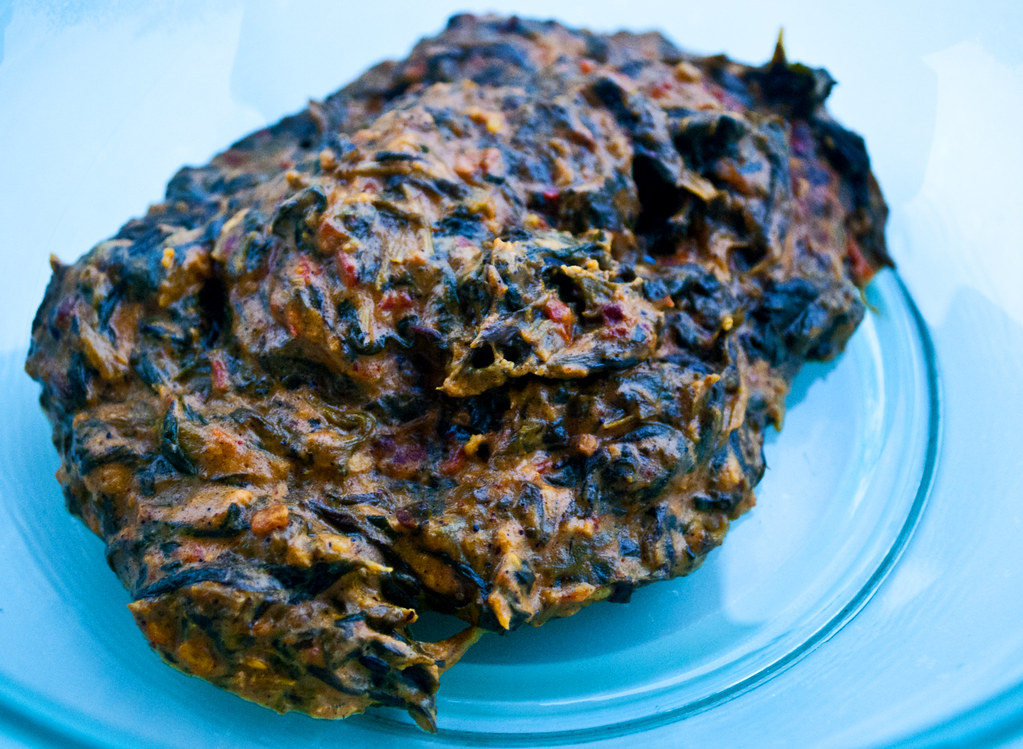Bhindi and Palak
I love Manjula's Kitchen. It's not a restaurant, but a website filled with Manjula Jain's vegetarian recipes, both in print and video. We love Indian food and have been using various recipes here and there, but these recipes for palak paneer (spinach with cheese) and bhindi masala (spicy fried okra) provided fantastic results and were very easy to follow.
We followed her recipes to a T, so I will not republish them here as there were no substitutions made, with the exception of excluding bell peppers in the bhindi masala. Bug even fried up cumin papadum (paper thin chips with flecks of cumin seeds) as an accompaniment. We had a delicious and filling dinner.
When we began making these recipes, we were surprised that tomatoes were pureed in palak paneer. The green color is so predominant that I must have overlooked the red tinge. There really was paneer in our palak paneer, but I somehow managed to grab a shot without any.
I almost forgot to note that we did not puree the spinach, preferring to have some texture remaining. To eat palak paneer more often, I think we need to tweak the amount of paneer and heavy cream, unfortunately. Once that is perfected, our results will be posted.
Bhindi masala is an addictive dish with the blend of coriander, cumin, and hing. I found myself taking a bite here, a bite there, each time I passed by the kitchen. Some restraint was needed and Bug made it clear that if the okras disappeared before he could sit down to eat, he would never make it again. Even with the niggling temptation to sneak just one more okra, that was enough for me to stop cold.
Bug cooked the raw okras long enough so its firmness was retained. I am unsure how frozen cut okra would fair, since we always use fresh okra.
The one thing I cannot fail to remark upon is the one ingredient that most people will scratch their heads over -- hing or asafoetida, a gum from a rhizome that is native to Afghanistan. There are no words to describe how pungent this ingredient is. Once you familiarize yourself with this odoriferous spice, you will single the scent out of hundreds of smells each time you walk into an Indian grocery store. While it is noxious in its tiny container, once cooked, a funky transformation occurs. The stinky smell vanishes. In its place is a wonderfully smooth and rounded flavor similar in essence to cooked onions.
- Cassaendra







0 deep thoughts:
Post a Comment